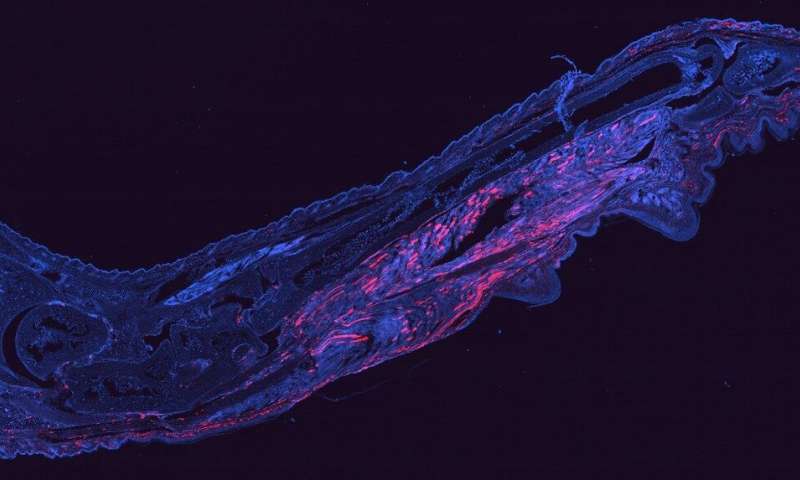How chikungunya virus may cause chronic joint pain

A new method for permanently marking cells infected with chikungunya virus could reveal how the virus continues to cause joint pain for months to years after the initial infection, according to a study published August 29 in the open-access journal PLOS Pathogens by Deborah Lenschow of Washington University School of Medicine in St. Louis, and colleagues. According to the authors, uncovering the mechanisms for long-term disease could aid in the development of treatments and preventative measures for this incapacitating, virally induced chronic arthritis.
Chikungunya virus is spread by mosquitoes and causes severe joint and muscle pain. Approximately 30 to 60 percent of people infected with the virus continue to experience joint pain for months to years after the initial infection. However, the cause of this persistent joint pain is unclear, as replicating virus cannot be detected during the chronic phase. To address this question, Lenschow and colleagues developed a reporter system to permanently mark cells infected by chikungunya virus.
Using this system, they show in mice that marked cells surviving chikungunya virus infection are a mixture of muscle and skin cells that are present for at least 112 days after initial virus inoculation. Treatment of mice with an antibody that blocks chikungunya virus infection reduces the number of marked cells in the muscle and skin. Moreover, surviving marked cells contain most of the persistent chikungunya virus RNA. Taken together, the findings provide further evidence for musculoskeletal cells as targets of chikungunya virus infection in the acute and chronic stages of disease. According to the authors, this reporter system represents a useful tool for identifying and isolating cells that harbor chronic viral RNA in order to study the mechanisms underlying chronic disease.
Source: Read Full Article
